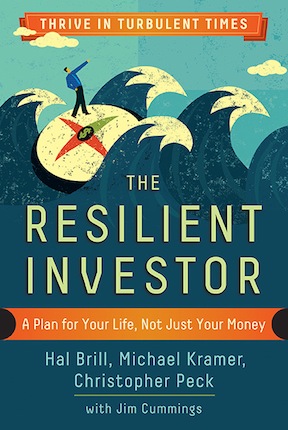Resilience is the New Sustainability

It’s been nearly 30 years since the concept of sustainability arose. While this sensible approach to living on the planet has shifted from the fringe to the mainstream, it remains far from being a clear and guiding principle.
Corporate disclosure of social and environmental performance remains voluntary, and commitments to significantly reduce carbon emissions remain few and far between, even as we continue to develop new fossil fuel resources. Meanwhile, in marketing and facile public discourse, sustainability has been significantly watered down, too often simply serving as a green patina atop business as usual. It’s time that we dig deeper.
The strains on our economic, political and ecological systems — all of which are becoming increasingly volatile — suggest that we need new skills and new strategies to meet these challenges. Navigating our way forward through all the layers of uncertainty is becoming a daunting challenge.
More than at any time since the dawn of the industrial revolution, even our future is unknowable: While the systems we have in place may be able to muddle along as they have, the possibility of staggering disruptions and partial breakdown is more plausible than it once was. So too is thepotential that technology and collective consciousness could evolvein ways that create unprecedented breakthroughs.
In these times, we really do need to be ready for anything. Resiliency offers a guiding principle that can shape our thinking, our planning and our actions in ways that keep us flexible and responsive to whatever changes may come. Resilience includes: anticipating and preparing for disturbance, improving our capacity to withstand shocks, rebuilding as necessary and adapting and evolving when possible.

We begin by acknowledging that everyone is an investor, making vital choices about our future on a daily basis. “Investing” is something we all do by directing our time, attention or money in ways that move us towards our future dreams, using a diverse range of strategies. In other words, everything we do helps manifest our future and ripples into the community and world, and as such it reflects our values, talents and intentions.
As investment advisors, we are well trained to keep a close eye on risk of all types. A key contributor to our development of the resilient investing system is the recognition that classic portfolio diversification, which very effectively manages financial risks, can leave us rather starkly exposed to larger, systemic risks. Our response is to expand our view of investing, and to cultivate an even broader kind of diversification.
Resilient investors work to grow all of their assets ― personal, tangible and financial. They seek this broader diversification by carefully deploying each asset type within three investment strategies ― close to home, in the sustainable global economy, and in evolutionary strategies that can transform society in fundamental ways.
Resilient investing offers a roadmap of this expanded diversification, one that digs deep into each of these nine diverse realms of investment. By taking a good look at your current life choices and seeking out ways to diversify across the nine zones, one can balance the need for safety with prudent moves to seek out growth and development. While this harkens back to time-tested methods of diversification, it applies them to a much larger set of “holdings.”
As always, things get most interesting where the rubber meets the road. What does it mean to invest in, say, personal assets within thesustainable global economy? Or to grow your tangible assets as part of an evolutionary strategy? The resilient investing system fleshes out the answers to these questions, so individuals can begin to see that all of their choices, about how they use their time, spend their money and target their future directions can work together, and create a foundation for responding nimbly to any changes that may come in their lives, or in the world around them.
As resilient investors reflect on the various risks and opportunities ahead, they can shape their lives in meaningful ways to protect and nourish personal, social and financial well-being. For example, if climate change looms large in their concerns, they may seek out innovative ways to invest in renewable energy, both for their homes (personal/tangible) and via emerging crowdfunding or impact investing channels (financial/evolutionary).
Fear of another financial system meltdown may cause some to move their money into community financial institutions (financial/close to home), to loan money to regenerative agricultural initiative (tangible/evolutionary) or get involved in locally focused investment clubs (which involves some personal assets of time and some financial assets, directed close to home).
As people and businesses examine the plausible futures (by looking past their own biases to more objectively prepare for the possibility that any or all of these futures may appear within our lifetimes), enormous personal, community, business and investment opportunities arise for those who anticipate and capitalize on these changes.
这些可能包括节约用水和努力energy, advocacy to assure greater public participation in decision-making and capital investments that revitalize communities. It might mean investing in new technologies to pull CO2 out of the atmosphere,retrofitting coastal cities to prepare for rises in sea leveland engaging in shareholder advocacy to raise the bar on corporate citizenship.
Resilience is a powerful metaphor for our uncertain times. It provides a framework for learning how to live with the fundamental complexity of modern life, rather than trying to simplify our way out of it in order to make decisions. When the inevitable disruptions do hit the system, resilient investors will have the best possible shock absorbers to minimize being rattled, and be positioned to bounce back even better than before.
Our new book introduces techniques to help readers design a resilient investing plan to explore how they can build their flexibility and responsiveness to whatever changes may come our way. We envision a “resilient future” in which each of the three core investment strategies — Close to Home, Sustainable Global Economy and Evolutionary — continue to blossom, helping to shape a world that reflects timeless human values.


